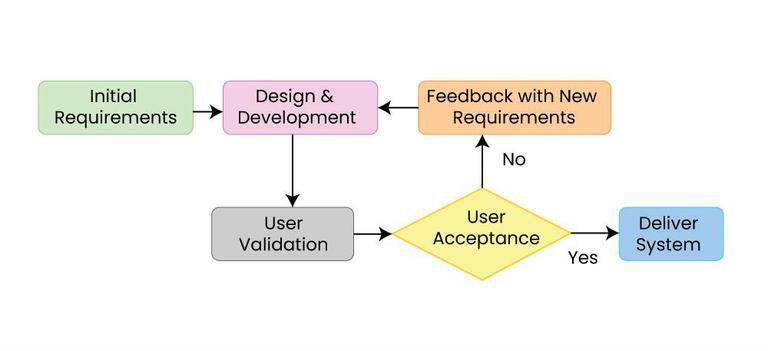|
Message-oriented Middleware
Message-oriented middleware (MOM) is software or hardware infrastructure supporting sending and receiving messages between distributed systems. Message-oriented middleware is in contrast to streaming-oriented middleware where data is communicated as a sequence of bytes with no explicit message boundaries. Note that streaming protocols are almost always built above protocols using discrete messages such as frames (Ethernet), datagrams ( UDP), packets ( IP), cells ( ATM), et al. MOM allows application modules to be distributed over heterogeneous platforms and reduces the complexity of developing applications that span multiple operating systems and network protocols. The middleware creates a distributed communications layer that insulates the application developer from the details of the various operating systems and network interfaces. Application programming interfaces ( APIs) that extend across diverse platforms and networks are typically provided by MOM. This middleware lay ... [...More Info...] [...Related Items...] OR: [Wikipedia] [Google] [Baidu] |
Asynchronous
Asynchrony is any dynamic far from synchronization. If and as parts of an asynchronous system become more synchronized, those parts or even the whole system can be said to be in sync. Asynchrony or asynchronous may refer to: Electronics and computing * Asynchrony (computer programming), the occurrence of events independent of the main program flow, and ways to deal with such events ** Async/await * Asynchronous system, a system having no global clock, instead operating under distributed control ** Asynchronous circuit, a sequential digital logic circuit not governed by a clock circuit or signal ** Asynchronous communication, transmission of data without the use of an external clock signal * Asynchronous cellular automaton, a mathematical model of discrete cells which update their state independently * Asynchronous operation, a sequence of operations executed out of time coincidence with any event * Asynchronous I/O, an Input and Output operations that allow a program to contin ... [...More Info...] [...Related Items...] OR: [Wikipedia] [Google] [Baidu] |
Software Architecture
Software architecture is the set of structures needed to reason about a software system and the discipline of creating such structures and systems. Each structure comprises software elements, relations among them, and properties of both elements and relations. The ''architecture'' of a software system is a metaphor, analogous to the architecture of a building. It functions as the blueprints for the system and the development project, which project management can later use to extrapolate the tasks necessary to be executed by the teams and people involved. Software architecture is about making fundamental structural choices that are costly to change once implemented. Software architecture choices include specific structural options from possibilities in Software design, the design of the software. There are two fundamental laws in software architecture: # Everything is a trade-off # "Why is more important than how" "Architectural Kata" is a teamwork which can be used to produce an ... [...More Info...] [...Related Items...] OR: [Wikipedia] [Google] [Baidu] |
Drag-and-drop
In computer graphical user interfaces, drag and drop is a pointing device gesture in which the user selects a virtual object by "grabbing" it and dragging it to a different location or onto another virtual object. In general, it can be used to invoke many kinds of actions, or create various types of associations between two abstract objects. As a feature, drag-and-drop support is not found in all software, though it is sometimes a fast and easy-to-learn technique. However, it is not always clear to users that an item can be dragged and dropped, or what command is performed by the drag and drop, which can decrease usability. Actions The basic sequence involved in drag and drop is: * Move the pointer (computing WIMP), pointer to the object * Press, and hold down, the button on the computer mouse, mouse or other pointing device, to "grab" the object * "Drag" the object to the desired location by moving the pointer to this one * "Drop" the object by releasing the button Draggi ... [...More Info...] [...Related Items...] OR: [Wikipedia] [Google] [Baidu] |
Graphical User Interface
A graphical user interface, or GUI, is a form of user interface that allows user (computing), users to human–computer interaction, interact with electronic devices through Graphics, graphical icon (computing), icons and visual indicators such as secondary notation. In many applications, GUIs are used instead of text-based user interface, text-based UIs, which are based on typed command labels or text navigation. GUIs were introduced in reaction to the perceived steep learning curve of command-line interfaces (CLIs), which require commands to be typed on a computer keyboard. The actions in a GUI are usually performed through direct manipulation interface, direct manipulation of the graphical elements. Beyond computers, GUIs are used in many handheld mobile devices such as MP3 players, portable media players, gaming devices, smartphones and smaller household, office and Distributed control system, industrial controls. The term ''GUI'' tends not to be applied to other lower-displa ... [...More Info...] [...Related Items...] OR: [Wikipedia] [Google] [Baidu] |
Software Developer
Software development is the process of designing and Implementation, implementing a software solution to Computer user satisfaction, satisfy a User (computing), user. The process is more encompassing than Computer programming, programming, writing source code, code, in that it includes conceiving the goal, evaluating feasibility, analyzing software requirements, requirements, software design, design, software testing, testing and software release life cycle, release. The process is part of software engineering which also includes management, organizational management, Software project management, project management, configuration management and other aspects. Software development involves many skills and job specializations including software programmer, programming, software test, testing, Technical writing, documentation, graphic design, user support, marketing, and fundraising. Software development involves many software tools, tools including: compiler, integrated develo ... [...More Info...] [...Related Items...] OR: [Wikipedia] [Google] [Baidu] |
Data Transformation
In computing, data transformation is the process of converting data from one format or structure into another format or structure. It is a fundamental aspect of most data integrationCIO.com. Agile Comes to Data Integration. Retrieved from: https://www.cio.com/article/2378615/data-management/agile-comes-to-data-integration.html and data management tasks such as data wrangling, data warehousing, data integration and application integration. Data transformation can be simple or complex based on the required changes to the data between the source (initial) data and the target (final) data. Data transformation is typically performed via a mixture of manual and automated steps.DataXFormer. Morcos, Abedjan, Ilyas, Ouzzani, Papotti, Stonebraker. An interactive data transformation tool. Retrieved from: http://livinglab.mit.edu/wp-content/uploads/2015/12/DataXFormer-An-Interactive-Data-Transformation-Tool.pdf Tools and technologies used for data transformation can vary widely based on t ... [...More Info...] [...Related Items...] OR: [Wikipedia] [Google] [Baidu] |
Multicast
In computer networking, multicast is a type of group communication where data transmission is addressed to a group of destination computers simultaneously. Multicast can be one-to-many or many-to-many distribution. Multicast differs from physical layer point-to-multipoint communication. Group communication may either be application layer multicast or network-assisted multicast, where the latter makes it possible for the source to efficiently send to the group in a single transmission. Copies are automatically created in other network elements, such as routers, switches and cellular network base stations, but only to network segments that currently contain members of the group. Network assisted multicast may be implemented at the data link layer using one-to-many addressing and switching such as Ethernet multicast addressing, Asynchronous Transfer Mode (ATM), point-to-multipoint virtual circuits (P2MP) or InfiniBand multicast. Network-assisted multicast may also be im ... [...More Info...] [...Related Items...] OR: [Wikipedia] [Google] [Baidu] |
Broadcasting (networking)
In computer networking, telecommunication and information theory, broadcasting is a method of transferring a message to all recipients simultaneously. Broadcasting can be performed as a high-level operation in a program, for example, broadcasting in Message Passing Interface, or it may be a low-level networking operation, for example broadcasting on Ethernet. All-to-all communication is a computer communication method in which each sender transmits messages to all receivers within a group. In networking this can be accomplished using broadcast or multicast. This is in contrast with the point-to-point method in which each sender communicates with one receiver. Addressing methods There are four principal addressing methods in the Internet Protocol: Overview In computer networking, broadcasting refers to transmitting a packet that will be received by every device on the network. In practice, the scope of the broadcast is limited to a broadcast domain. Broadcasting is the ... [...More Info...] [...Related Items...] OR: [Wikipedia] [Google] [Baidu] |
Asynchrony (computing)
Asynchrony, in computer programming, refers to the occurrence of events independent of the main program flow and ways to deal with such events. These may be "outside" events such as the arrival of signals, or actions instigated by a program that take place concurrently with program execution, without the program hanging to wait for results. Asynchronous input/output is an example of the latter case of asynchrony, and lets programs issue commands to storage or network devices that service these requests while the processor continues executing the program. Doing so provides a degree of concurrency. A common way for dealing with asynchrony in a programming interface is to provide subroutines that return a future or promise that represents the ongoing operation, and a synchronizing operation that blocks until the future or promise is completed. Some programming languages, such as Cilk, have special syntax for expressing an asynchronous procedure call. Examples of asynchrony incl ... [...More Info...] [...Related Items...] OR: [Wikipedia] [Google] [Baidu] |
Backup
In information technology, a backup, or data backup is a copy of computer data taken and stored elsewhere so that it may be used to restore the original after a data loss event. The verb form, referring to the process of doing so, is "wikt:back up, back up", whereas the noun and adjective form is "wikt:backup, backup". Backups can be used to data recovery, recover data after its loss from File deletion, data deletion or Data corruption, corruption, or to recover data from an earlier time. Backups provide a simple form of IT disaster recovery; however not all backup systems are able to reconstitute a computer system or other complex configuration such as a computer cluster, active directory server, or database server. A backup system contains at least one copy of all data considered worth saving. The computer data storage, data storage requirements can be large. An information repository model may be used to provide structure to this storage. There are different types of data stor ... [...More Info...] [...Related Items...] OR: [Wikipedia] [Google] [Baidu] |
Persistent Storage
In computer science, persistence refers to the characteristic of state of a system that outlives (persists for longer than) the process that created it. This is achieved in practice by storing the state as data in computer data storage. Programs have to transfer data to and from storage devices and have to provide mappings from the native programming-language data structures to the storage device data structures. Picture editing programs or word processors, for example, achieve state persistence by saving their documents to files. Orthogonal or transparent persistence Persistence is said to be "orthogonal" or "transparent" when it is implemented as an intrinsic property of the execution environment of a program. An orthogonal persistence environment does not require any specific actions by programs running in it to retrieve or save their state. Non-orthogonal persistence requires data to be written and read to and from storage using specific instructions in a program, res ... [...More Info...] [...Related Items...] OR: [Wikipedia] [Google] [Baidu] |




